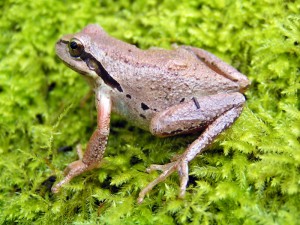
By Tracie Cone
SACRAMENTO, Calif. (AP) Scientists have known for years that pesticides drift from California's agricultural heartland and accumulate in frogs at remote locations in the Sierra Nevada.
Now they have a better understanding of exactly which pesticides collect in the frogs' tissue.
A study by the U.S. Geological Survey released on Friday tested for nearly 100 of California's most commonly used pesticides. It found concentrations of two fungicides – pyraclostrobin and tebuconazole – and one herbicide – simazine – in Pacific chorus frogs.
"Our results show that current-use pesticides, particularly fungicides, are accumulating in the bodies of Pacific chorus frogs in the Sierra Nevada," says Kelly Smalling, a research hydrologist with the U.S. Geological Survey and lead author of the study. "This is the first time we’ve detected many of these compounds, including fungicides, in the Sierra Nevada. The data generated by this study support past research on the potential of pesticides to be transported by wind or rain from the Central Valley to the Sierras."
